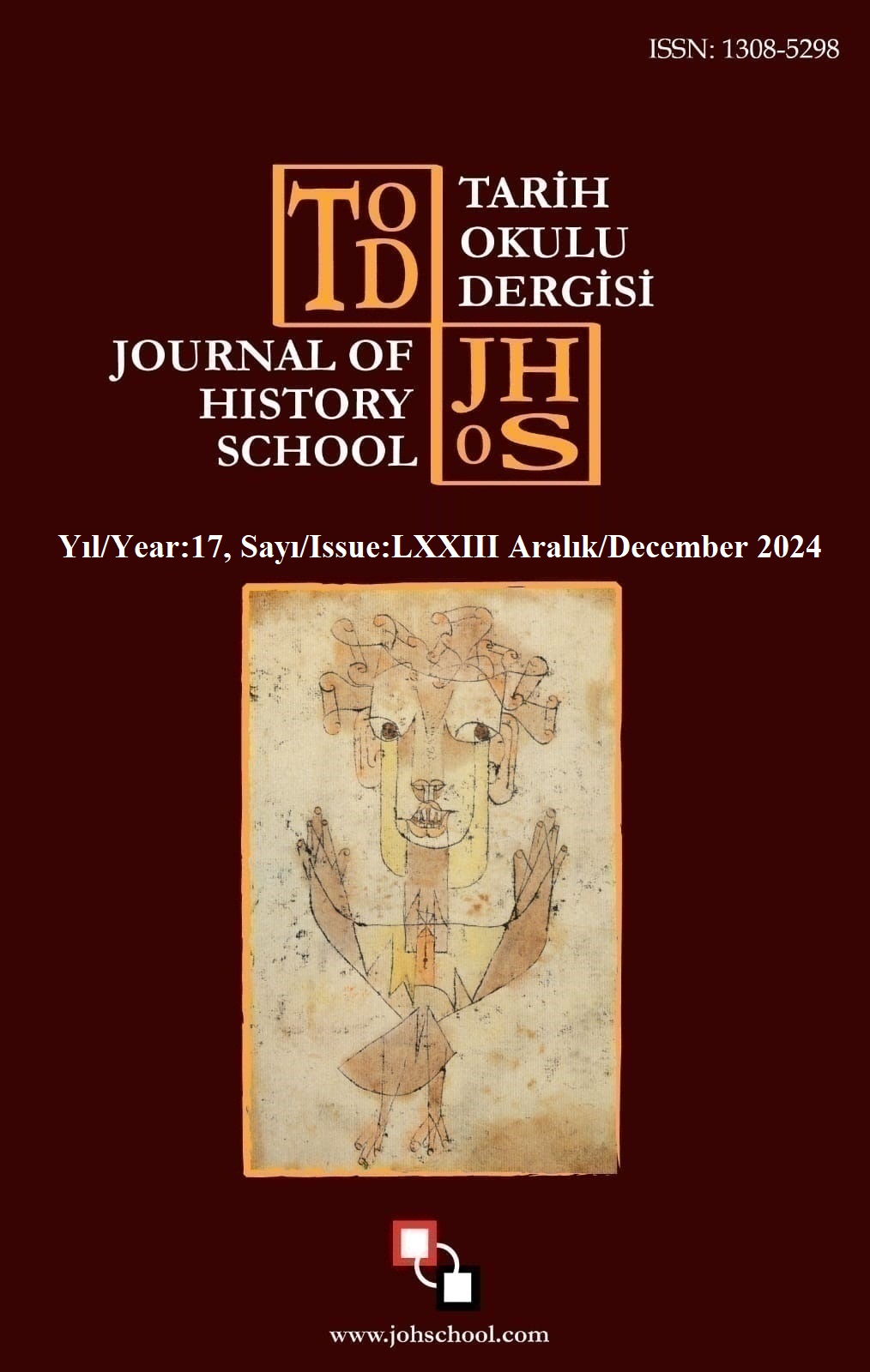Author :
Abstract
Azerbaycan’ın kuzey batısında bulunan Şeki Rayonu’nun arazisi, yeryüzü şekillerine göre üç önemli alana ayrılmaktadır: Bu alanlar, Büyük Kafkas’ın güney yamacı, Eğriçay vadisi ve Acınohur Öndağlığı’dır. Rayonun en yüksek noktası (Seyityurd 3689 m) ile en alçak noktası (Acınohur Gölü kıyıları 107 m) arasındaki kot farkı 3.500 metreden fazladır. Kısa mesafede büyük yükselti farkının olması Rayon arazisinde iklim, toprak ve bitki çeşitliliğine olanak sağlamıştır. Rayon nüfusunun ve yerleşmelerin de yükselti basamaklarına göre farklı dağılış gösterdiği görülmektedir. Bu çalışmada, Şeki Rayonu’ndaki nüfus ve yerleşmelerin yükselti basamaklarına göre dağılışı incelenmiştir. Hem nitel hem de nicel verilerin kullanıldığı karma desenli araştırma yöntemi kullanılmıştır. Öncelikle, Coğrafi Bilgi Sistemi ile yükselti basamakları ve her yükselti basamağında yer alan yerleşmeler belirlenmiştir. Azerbaycan İstatistik Komitesi’nden elde edilen veriler değerlendirilerek rayon nüfusunun yükselti basamaklarına göre nasıl dağılış gösterdiği analiz edilmiştir. Elde edilen verilere göre Şeki Rayon nüfusunun ağırlıklı olarak 500 metre ile 1000 metre yükselti aralığında yoğunlaştığı görülmüştür. Yükseltisi 500 metreden az olan alanlar rayon yüzölçümünün %67’sini oluştursa da bu yükseltide rayon nüfusunun sadece %36’sının yaşadığı tesbit edilmiştir. Nüfusun %13’ünün ise 1000 metreden yüksek alanda yaşadığı görülmüştür. Sonuç olarak Şeki Rayonu’ndaki yerleşmeler ve nüfus dağılışı ile arazisinin yükselti farkı arasındaki ilişki incelendiğinde, yerleşmelerin eşit olarak dağılmadığı ve yerleşim yeri sayısıyla nüfus arasında doğrusal ilişkinin olmadığı belirlenmiştir. Rayonun dağlık kesiminde yerleşme sayısı az olsa da nüfus sayısının daha fazla olduğu, düzlük arazilerde ise çok yerleşme olmasına rağmen nüfus sayısının daha az olduğu gözlemlenmiştir. Sonuç olarak Şeki Rayonunda nüfus ve yerleşmelerin dağılışında rayonun fiziki, beşeri ve ekonomik coğrafya özelliklerinin önemli rol oynadığı tesbit edilmiştir.
Keywords
Abstract
The territory of the Shaki District of Azerbaijan is divided into three important areas according to the landforms: These areas are the southern slope of the Greater Caucasus, the Eğriçay Valley, and the Acınohur Foreland. The difference between the highest point of the province (Seyityurd 3689 m) and the lowest point (107 m on the shores of Lake Acınohur) is more than 3,500 meters. The large elevation difference in a short distance has enabled climate, soil, and plant diversity in the Rayon. It is seen that the population and settlements of the Rayon are also distributed differently according to the elevation steps. This study examined the population distribution and settlements in Sheki Rayon according to altitude levels. A mixed-design research method using both qualitative and quantitative data was used. First, elevation steps and settlements at each step were determined using Geographic Information Systems. The data obtained from the Azerbaijan Statistical Committee were evaluated and the distribution of the rayon's population according to altitude levels was analyzed. According to the data obtained, the population of Sheki Rayon was mainly concentrated in the altitude range of 500 meters to 1000 meters. Although areas with an altitude of less than 500 meters constitute 67% of the rayon's surface area, it has been determined that only 36% of the rayon's population lives at this altitude. It has been observed that 13% of the population lives in areas over 1000 meters. It has been determined that the settlements are not evenly distributed and there is no linear relationship between the number of settlements and the population. Although the number of settlements in the mountainous terrain is low, the population in these settlements is higher, while the population is lower in the flat terrains although there are many settlements. As a result, it has been determined that the region's physical, human, and economic geographical features play an important role in the distribution of population and settlements in Sheki Rayon.





